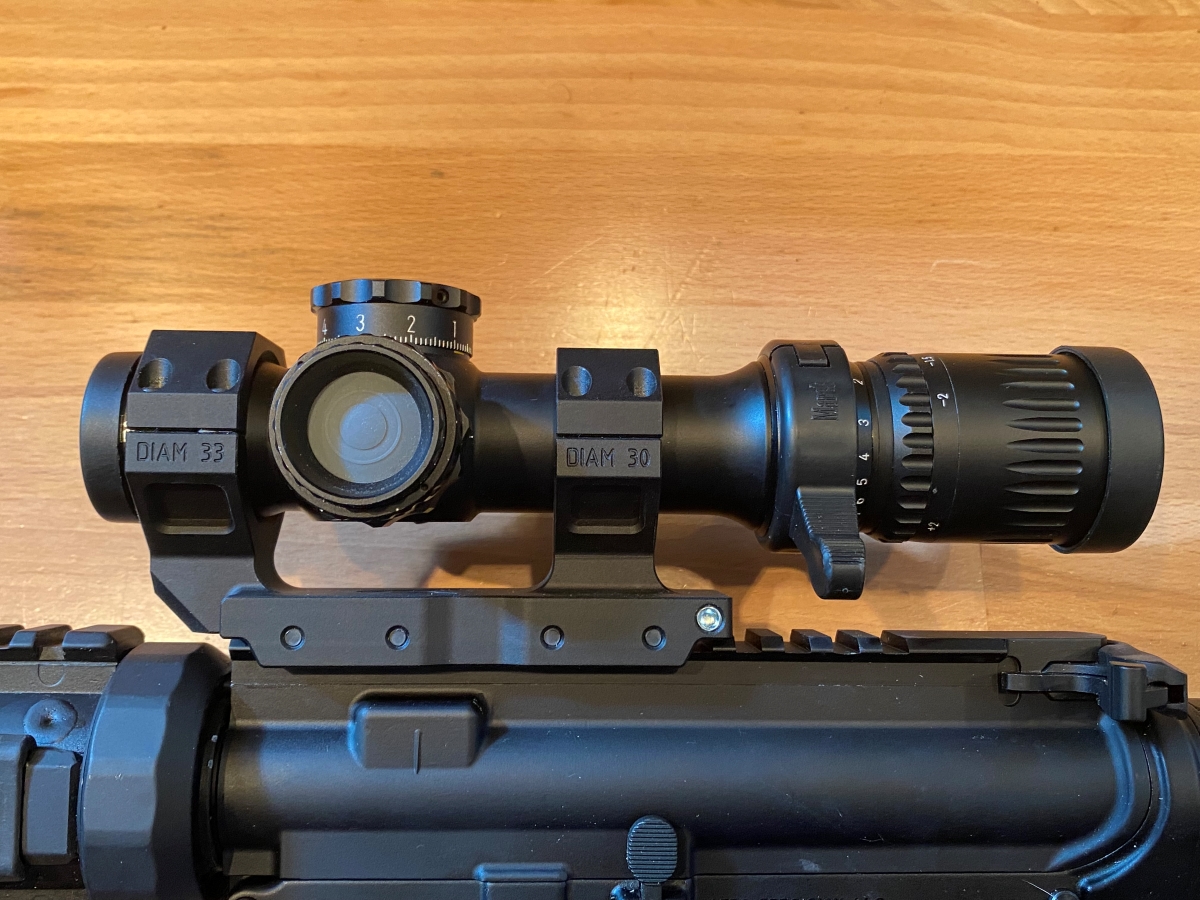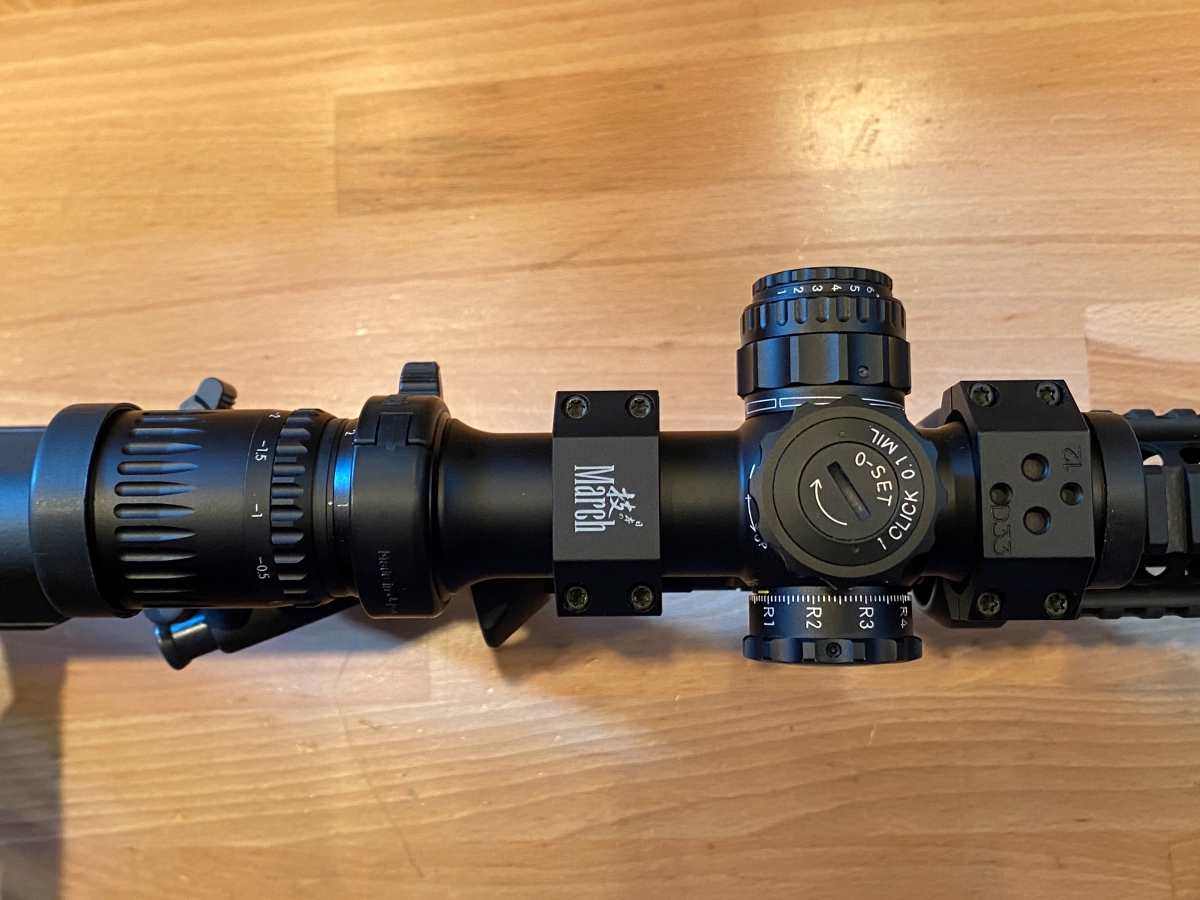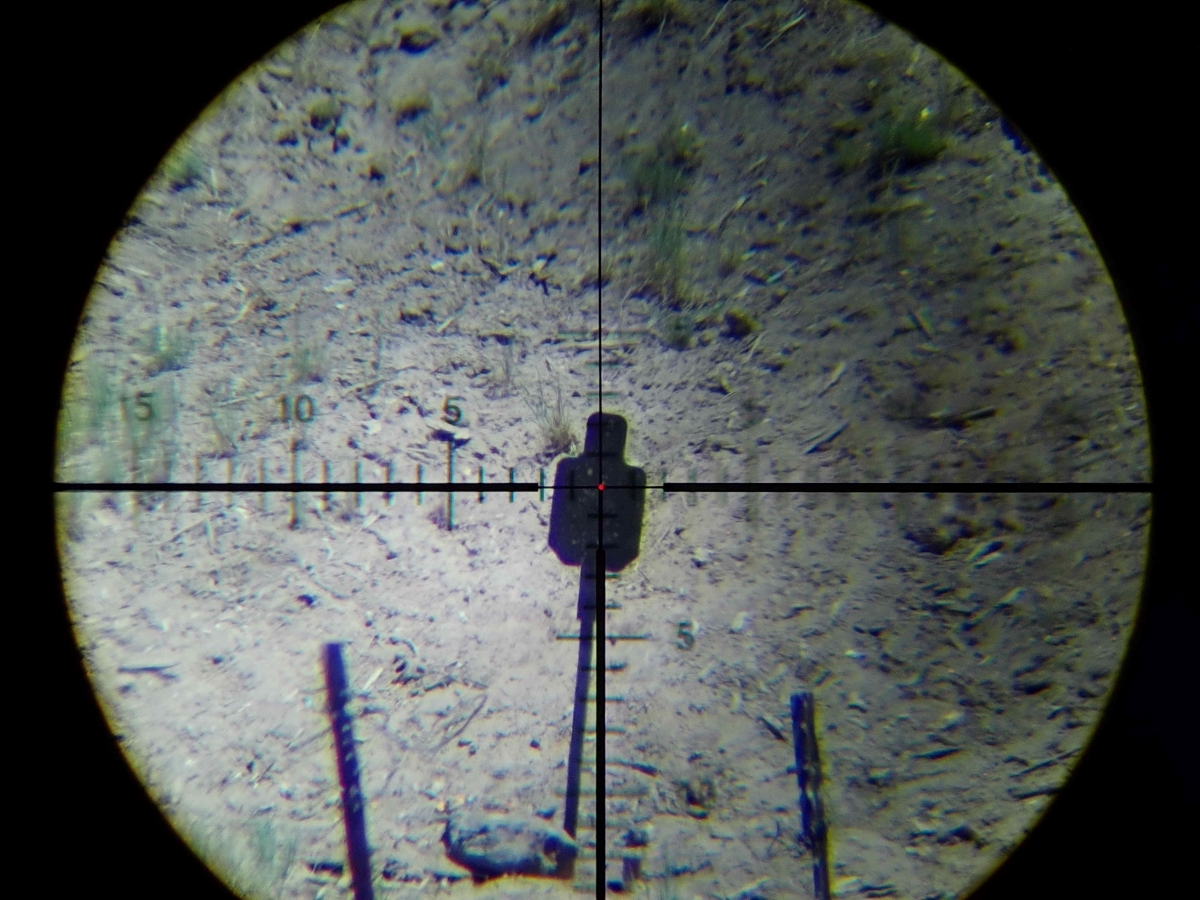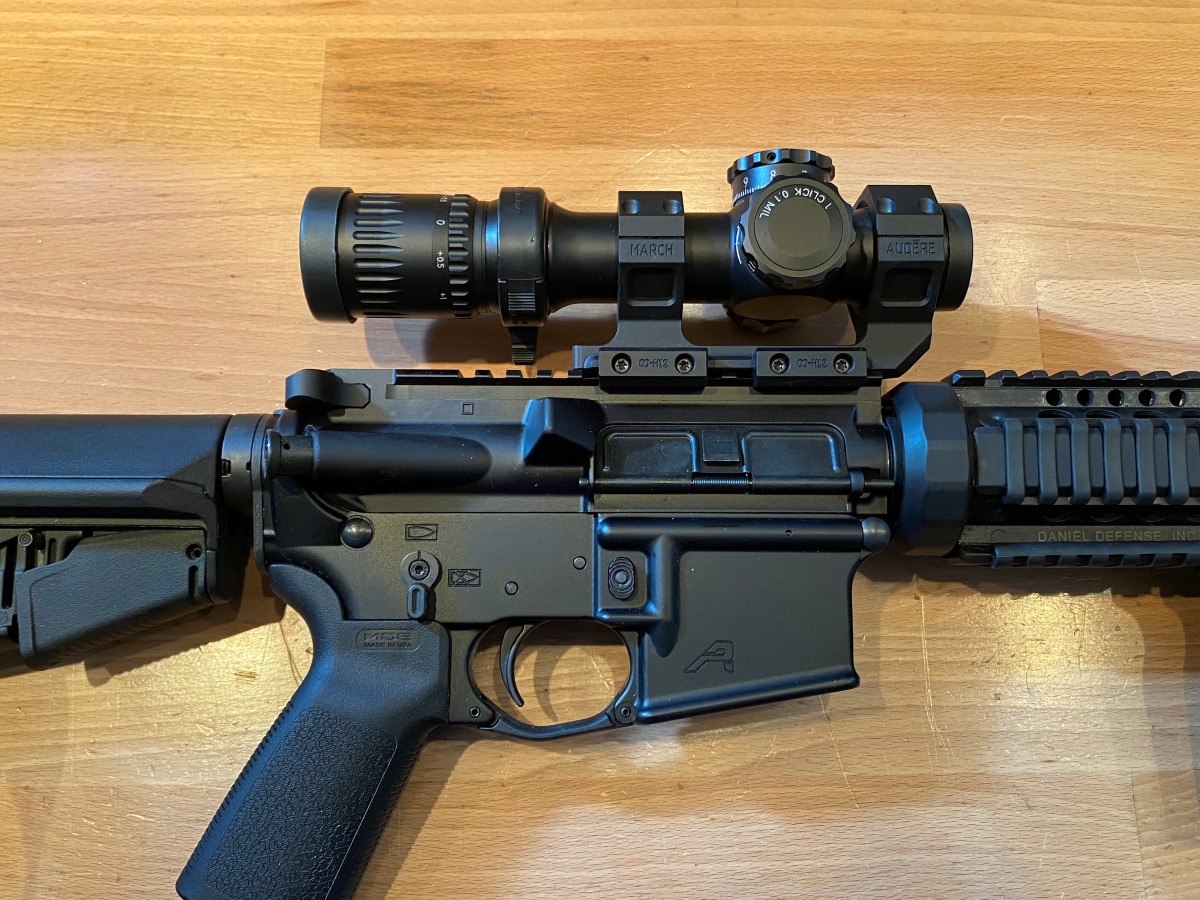March Scopes are made in Japan by Deon Optical Design Corporation. They are known for producing high-quality precision rifle optics popular with competitive shooters. One of their new offerings is a first focal plane, “low-variable-power” optic boasting a 1-10X magnification range. Producing a scope with this magnification range presents some unique challenges. Producing it in a light-weight, compact package means there will be some trade-offs. The March F 1-10X24 has some unique features not typically found on low-variable-power optics.

The Mount
The March F 1-10X24 comes with its own proprietary mount. It uses 4 crossbolts to mount to Picatinny rails. While this mount is very robust and mounts the optic at the correct height for AR-style rifles, it is not quick-detach, which I see as a bit of a disadvantage if you like running back-up iron sights like I do… call me old-fashioned. Because the front and rear rings are different sizes (33mm front, 30mm rear), there aren’t really any other mount options for this scope. The illumination dial is concentric with the parallax dial and a little difficult to use without interfering with the parallax setting.

The March F 1-10X24 also comes with an add-on plastic magnification ring throw-lever. Due to the configuration of the magnification ring, it can only mount in one orientation, that is, it isn’t position-adjustable. The Elevation and Windage knobs are comfortably large and calibrated in .1 mil clicks. Reticle focus is obtained by rotating the scope eyepiece which is held in position with a locking ring.
The View


RATINGS:
Size/Weight: 5 out of 5 – The March F 1-10X24 is very compact and fairly light in comparison with similar LVPO’s. In fact, I would accept a slightly larger, heavier package if it meant less fish-eye effect at high magnification.
Mounting System: 3 out of 5 – The supplied mount is quite robust, but lacks quick-detach functionality. I would like to see it with throw-levers. This one scores an extra point low because it is proprietary and the user is stuck with the supplied mount instead of aftermarket options.
Features: 4 out of 5 – I’m torn on parallax adjustment on LVPO’s. I always thought it would be a good idea, but seeing it in action… I have mixed feelings now. Perhaps its something one could learn to live with, and with enough practice eventually realize some of the added benefits of this adjustment. On this particular optic, it just seemed to complicate reticle and image clarity issues. I like the push-button illumination on/off, but the illumination rheostat knob is difficult to use, the parallax adjustment always seemed to interfere. I like the add-on magnification ring throw-lever, but don’t like that it can only be used in one timing location.
Reticle: 4 out of 5 – There is some very clever engineering in the reticle design, making use of essentially a duplex “fire-dot” style reticle in the second focal plane makes it very usable at any magnification. Placing 1 mil-subtension stadia lines in the first focal plane gives reliable angular measurement at any magnification. I have to compliment the Deon Optics engineering department for this innovative answer to the problem presented by extreme magnification range scopes with FFP reticles. I am not a fan of the “Christmas Tree” reticle, so no problems there, but I would have liked some .5 mil minor stadia lines in addition to the 1.0 mil major stadia. The real problem, which isn’t actually a reticle issue, is the “fish-eye” effect that makes the reticle start to blur significantly past 5.0 mils from center. Speaking of which…
Clarity: 3 out of 5 – While Japanese optics are known for excellent clarity and light transmission, I don’t think the issues with this scope are related to the glass chemistry, as much as the lens geometry. I think they just tried to pack too much magnification into too small of a package and the results were unfortunate. At low power, clarity is just fine, but try as I might, I could not get the reticle to focus from about the 5.0 mil line to the edge of the glass at the higher magnification settings. As you can see from the images above, the 10-15 mil stadia were so blurry at 10X that they are basically unusable.
Value: 2 out of 5 – If this were an inexpensive optic for the casual user in the…. $500 or less range, I would be inclined to accept some of these deficiencies. For a scope retailing in the $2750 range… I have much higher expectations.
FINAL SCORE 70% – FAIR
This is a lower score than I would have liked to give this optic, but my integrity as a reviewer demands an honest opinion – which is what this is… just my opinion. I think Deon (March) is a company known for some high quality scopes. I think they use some very innovative engineering. This particular scope probably needs to go back to the drawing board. My main gripes:
1.) First and foremost is the fish-eye/blur effect, which makes the reticle almost useless at higher magnifications
2.) Proprietary mount is required and the supplied mount doesn’t have QD functionality.
3.) Needs more illumination settings and illumination knob needs to be a little more user-friendly.
I received this product as a courtesy from the manufacturer via Spotter Up so I could test it and give my honest feedback. I am not bound by any written, verbal, or implied contract to give this product a good review. All opinions are my own and are based off my personal experience with the product.
*The views and opinions expressed on this website are solely those of the original authors and contributors. These views and opinions do not necessarily represent those of Spotter Up Magazine, the administrative staff, and/or any/all contributors to this site.


Hi,
Thanks for your in depth review, however the scope pictured does not look anything like the 1-10 scopes I have seen in other reviews or ads.. The forend looks to be some from some other scope, I am confused.
What was the year of manufacture of this particular scope?
Regards …. Jim
James, I understand the confusion, as March Optics makes 2 models in 1-10X. The earlier model had a longer tube which accommodated standard rings or mounts. This shorter body style does not. I’m not sure of the year of manufacture of the scope I reviewed in this article, but I was told it was a newer model so I suspect date of manufacture to be late 2020 or early 2021. ~M
March makes the “Compact” line, which is the other scope you are describing. It is shorter than standard, but longer than this one. This scope is the “Shorty” line. March still makes both, though there are some differences in the product lines.
March makes the “Compact” line, which is the other scope you are describing. It is shorter than standard, but longer than this one. This scope is the “Shorty” line. March still makes both, though there are some differences in the product lines.